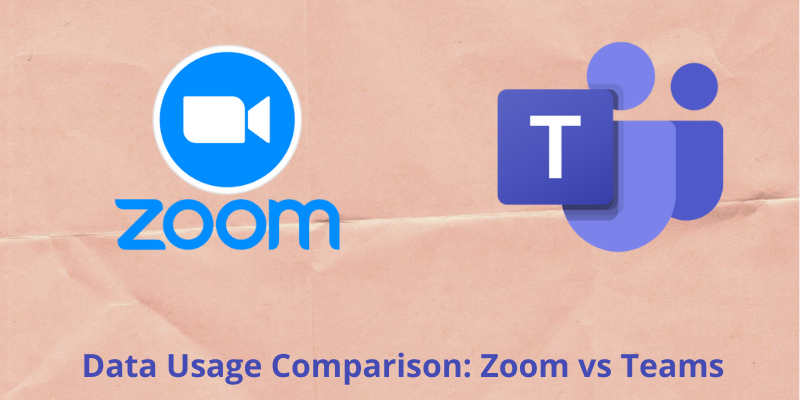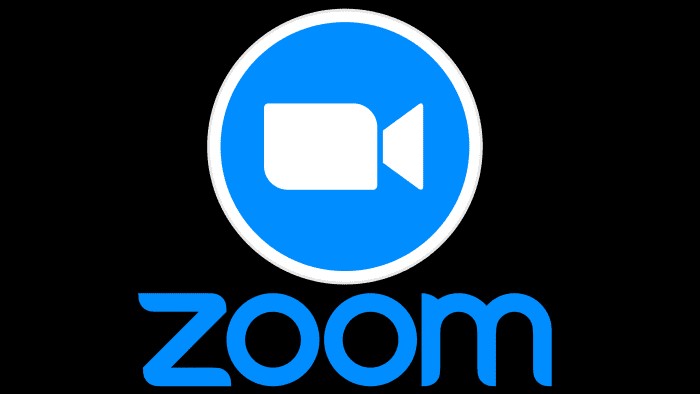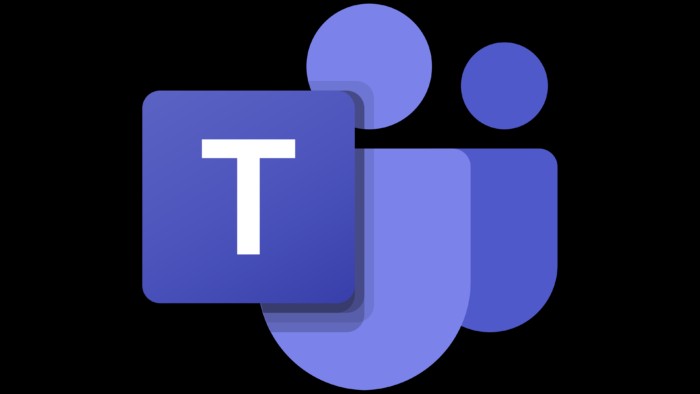Over the past two years, video conferencing apps like Zoom and Microsoft Teams have become mainstays in our lives.

Whether for conducting business or staying in touch with friends and family, both Zoom and Teams have revolutionized face-to-face communication in business and education.
Video conference streaming isn’t without its drawbacks, however. This is especially true for those working with a limited monthly data allowance.
Both applications are notorious for high data and bandwidth consumption, but how much do they really use?
Is Zoom more efficient than Microsoft Teams? How much data does a Zoom or Teams calls use?
Quick Answer: Zoom uses on average 900-1000 Mbytes (MB) of data per hour while Teams uses around 700-900 Mbytes (MB) per hour.
Finding answers to these questions isn’t exactly as straightforward as you might imagine.
Your data totals depend on several variables. Foremost, upon assessing the data consumption of any video call, you must consider meeting length.
Obviously, the longer the stream session, the more data you consume. But call duration is hardly the sole determining factor when it comes to how much data a live stream call consumes.
If you’re working remotely, it’s likely the case that you’re on frequent video calls with several parties.
What’s more, these calls probably deploy various collaborative features. When these types of calls are conducted in high definition, that’s when you’ll notice your data totals start to add up.
In this article, we’ll take a look at Zoom and Teams data consumption, how the two compare, and which factors influence data consumption the most.
We’ll highlight the difference in data totals for one-on-one and group calls before discussing how these video conferencing applications use data on mobile devices.
How we Calculate Data Consumption
In this article we will calculate data consumption of conference calls by using the Bandwidth metrics provided by each service.
Keep in mind that data usage is not the same as Bandwidth.
Bandwidth in data communication is the data rate (speed) by which your device downloads or uploads data. It is usually measured in bits per second (bps) or Megabits per second (Mbps).
Data usage on the other hand is the amount of data consumed in a certain timeframe and is measured in Megabytes (MB) or Gigabytes (GB). Of course, there are higher numbers than those but we’ll stick with the most popular ones.
To calculate Data Usage we can take the Bandwidth needed (bps or Mbps) for a specific conference call and find how much MB or GB will be downloaded in a specific timeframe (e.g in 1 hour).
Keep in mind that 1 byte is equal to 8 bits so whatever we find in bits we must divide it by 8 to find bytes.
Example:
Assume a video call needs 2Mbps bandwidth (data rate). In 1 hour (3600 seconds) of a video call, the total data that will be consumed will be:
2 (Mbps) x 3600 (sec) = 7200 Megabits
7200 Megabits / 8 = 900 Megabytes (MB).
The above means that a one hour video call which runs at 2Mbps will consume around 900MB of data.
Bandwidth Requirements for Zoom and Teams
Before moving further to our article, let’s check the official Bandwidth (data rate) requirements from the two conferencing services:
Zoom Bandwidth Requirements
| Call Type | Bandwidth Rate |
| 1:1 Video call | SD video: 600kbps (up/down)
720p HD video: 1.2Mbps (up/down) 1080p HD video: 3.8Mbps/3.0Mbps (up/down) |
| Group Video Call | SD video: 1.0 Mbps/600kbps (up/down)
720p HD video: 2.6Mbps/1.8Mbps (up/down) 1080p HD video: 3.8Mbps/3.0Mbps (up/down) |
For simplicity reasons, we will consider that a Zoom call on-average requires 2Mbps data rate (bandwidth). This will include video + audio and other presentation features.
We will use the bandwidth number above to calculate the Data usage of Zoom calls on an average basis.
Teams Bandwidth Requirements
According to Microsoft’s website, “Teams is always conservative on bandwidth utilization and can deliver HD video quality in under 1.5Mbps”.
Here are the numbers as presented on Microsoft’s website:
| Call Type | Bandwidth Rate |
| One-to-one Video call | Minimum: 150 kbps (up/down)
Recommended: 1.5Mbps (up/down) Best: 4Mbps (up/down) |
| Meetings Video Call | Minimum: 150/200 kbps (up/down)
Recommended: 2.5Mbps/4Mbps (up/down) Best: 4Mbps (up/down) |
Zoom vs Teams Call Data Usage
Keep in mind that the calculated data usage for each service below are average estimated numbers which are influenced by several factors such as video quality, number of participants, screen-sharing features etc.
Zoom Data Usage per Hour

Let’s calculate the average data used by a Zoom call per 1 hour:
As mentioned above, the average bandwidth is 2Mbps.
For 1 hour call (3600 seconds): 2 x 3600 = 7200 Mbits / 8 = 900 Mbytes (MB) per hour (or more)
So, on average, Zoom uses roughly 900-1000 MB of data every hour. This is a reliable estimate for both one-on-one video and conference calls hosting several users.
If you’re working within the confines of a monthly data limit that restricts how much data you can access, 900 MB will undoubtedly seem like a high figure.
There are ways to ease your data usage for video calls, however. We’ll discuss this a bit later below.
There’s one key point to remember, however. In general, the higher your video resolution settings -for instance, selecting an HD over a standard definition stream- the more data your call consumes.
This is universally true, irrespective of which video conferencing app you use. Choosing standard definition over HD streaming is the best way to cut down on usage.
Likewise, data consumption increases for group calls anywhere between 13.5 MB to 40 MB per minute.
Teams Data Usage per Hour

But what about Microsoft Teams? Is it more efficient than Zoom for video calls?
Indeed, Microsoft has developed teams with conservative bandwidth usage in mind.
We will consider the average bandwidth rate of 1.5 Mbps as given by Microsoft to calculate average data usage.
So, for 1 hour of Teams call (3600 seconds) at 1.5 Mbps:
1.5 x 3600 = 5400 Mbits / 8 = 675 Mbytes (MB)
If we consider also audio + video and other factors, a safer estimate for 1 hour of Teams call is around 700-900 MB.
While Zoom uses about 900-1000 MB per hour on average, Microsoft Teams consumes a little less than that.
Comparison Table
| Zoom Data Usage / hour (average) | Teams Data Usage / hour (average) |
| Around 900-1000 Mbytes (MB) | Around 700-900 Mbytes (MB) |
Mobile Data Usage for Zoom and Teams
But what about mobile usage? Zoom performs notably well with mobile calling, eating up less data because it optimizes bandwidth usage based on the strength of your connection.
But Microsoft’s recent update to Teams, released in March 2021, includes a new feature for optimizing video calling for Android and iOS devices alike.
This feature provides Teams users with an option to reduce bandwidth by selecting settings in the app that adapt to the strength of the local network.
The principal intent behind the enhancement was to reduce data consumption when using the Teams mobile app for video calls.
The ability to manage data consumption on video calls by enabling the low data mode on a mobile device is particularly beneficial.
Mobile plans are where users find themselves most constrained concerning data usage. Both Teams and Zoom score well in optimizing poor or limited bandwidth across mobile networks.
Video Conference Streaming Compared to Normal Internet Streaming
Live video conference streaming over Zoom or Teams is roughly comparable to the typical streaming you do over apps like YouTube or Netflix.
Live video conference streaming (Zoom and Teams) usually eats up more data, however. The apps require both upload and download streams because conferencing is a two-way activity. This means additional data usage.
On the other hand, streaming a movie from Netflix or Youtube etc requires mostly download data streams and not much upload streams. This means they consume less data.
There was a time when it was easier to distinguish between live stream video conferencing and conventional video streaming.
Video conferencing was limited to meetings between a dozen people or more via bidirectional video and audio.
Streaming, on the other hand, sent a one-way audio/video signal to a viewing audience only.
Advancements in streaming technology for both video streaming and live stream conferencing have led to a conflation of the two mediums.
Meetings often feel like live stream presentations, while streaming services have introduced new interactive features to become more conference-like.
How to Reduce Data Usage for Zoom and Teams
Both services will eat up a large portion of your monthly data, especially if you’re using the apps daily for work. Here are three quick ways to bring down your live streaming data and bandwidth consumption:
- Reduce the video quality of the stream
- Turn off your camera when not presenting
- Minimize screen sharing
Find a Data Plan That Supports Your Usage
Consistency is the key at work, and you want all your video calls to go off without a hitch.
If you’ve just started officing remotely, be sure to do your research to find an internet and cell phone data plan that supports the minimum bandwidth requirements for Zoom and Microsoft Teams.
Final Words
As an increased supply of the labor force works from home, video conferencing streaming services have become vital workplace communication tools.
Without them, business and education might have suffered an intense deficiency in face-to-face interaction over the last two years.
For workers who have transitioned to the home office permanently, questions about live streaming and data consumption aren’t limited to users with caps on their data plans.
Maintaining the proper bandwidth internet speed at home is now entirely akin to a workplace performance requirement.
Understanding how much data the various live streaming services consume is critical to ensuring you have enough internet speed to keep your conference calls running smoothly.
Both Zoom and Microsoft publish their minimum bandwidth requirements for efficient streaming.
Whether you are traveling for work or officing from an unfamiliar location, remember these published internet speed statistics before going into a critical video conference.
Leave a Reply